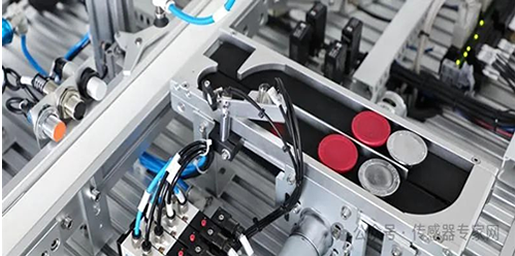of our lives. Among them, MEMS acoustic sensors, with their characteristics of miniaturization, high precision, and low cost, have shown broad application prospects in multiple fields such as consumer electronics, automotive electronics, and medical health. This article will take you to a deeper understanding of the classification and application of MEMS sound sensors, and explore the mysteries of this miniaturized sound world.

一、 Classification of MEMS acoustic sensors
MEMS acoustic sensor, also known as MEMS microphone, is an acoustic sensor manufactured using MEMS technology that can capture and convert sound signals into electrical signals. According to its working principle and structural characteristics, MEMS acoustic sensors are mainly divided into the following categories:
1. Piezoresistive MEMS microphone: Piezoresistive MEMS microphone is the most common type on the market. It uses MEMS technology to make a thin layer of silicon film into a pressure-sensitive element. When sound waves act on the film, it deforms, thereby changing its internal resistance value and converting sound signals into electrical signals. Piezoresistive MEMS microphones have the advantages of high sensitivity, low power consumption, and easy integration, and are widely used in consumer electronics products such as smartphones, headphones, and laptops.
2. Capacitive MEMS microphone: The working principle of a capacitive MEMS microphone is to use the diaphragm vibration caused by sound waves to change the capacitance value of the capacitor, thereby converting sound signals into electrical signals. Compared with piezoresistive microphones, capacitive MEMS microphones have higher signal-to-noise ratio and wider frequency response range, making them suitable for applications that require high fidelity audio acquisition, such as professional recording equipment, video conferencing systems, etc.
3. Piezoelectric MEMS microphone: Piezoelectric MEMS microphones work using the piezoelectric effect, where the diaphragm vibration caused by sound waves produces voltage changes. This type of microphone usually has high sensitivity and fast response speed, but due to its complex structure and relatively high cost, it is mainly used in some special fields, such as underwater acoustic detection, military communication, etc.
4. Optical MEMS microphone: Optical MEMS microphone is an emerging acoustic sensor that uses optical principles to detect diaphragm vibrations caused by sound waves. Compared with traditional electrical MEMS microphones, optical MEMS microphones have higher accuracy and stability, and can maintain normal operation in extreme environments. However, due to its high technical difficulty and high cost, it is still in the research and development stage and has not yet been widely applied in the market.
二、 Application of MEMS Acoustic Sensors
MEMS acoustic sensors have shown broad application prospects in multiple fields due to their unique advantages. Here are several typical application scenarios:
1. In the field of consumer electronics: MEMS sound sensors have become an indispensable part of consumer electronics products such as smartphones, tablets, and headphones. They are not only used for voice calls and recording functions, but also widely used in speech recognition, noise cancellation, environmental sound effect simulation, and other fields. For example, high-end smartphones are typically equipped with multiple MEMS microphones to achieve more accurate voice capture and positioning, improving users' call quality and audio experience.
2. In the field of automotive electronics: With the development of automotive intelligence and networking, the application of MEMS acoustic sensors in the automotive electronics field is becoming increasingly widespread. They are used in various aspects such as car audio systems, voice control systems, collision warning systems, etc. Especially in voice control systems, MEMS microphones can accurately recognize the driver's voice commands, achieving a more convenient and safe driving experience.
3. Medical and health field: MEMS acoustic sensors also play an important role in the medical and health field. They are used in hearing aids, medical monitors, sound therapy devices, and other equipment to help patients better listen to the world and monitor their health status. In addition, MEMS microphones can also be used for remote medical consultation and diagnosis, enabling real-time voice communication between doctors and patients.
4. Internet of Things and Smart Home: MEMS sound sensors are widely used in sound monitoring and recognition systems in the field of Internet of Things and smart home. They can capture sound signals in the home environment and achieve functions such as voice control and security monitoring. For example, smart speakers receive user voice commands through MEMS microphones, enabling operations such as music playback and weather tracking; The smart home security system uses MEMS microphones to monitor abnormal sounds and issue alerts in a timely manner.
5. Industry and Aerospace: MEMS acoustic sensors also play an important role in the fields of industry and aerospace. They are used in machine fault diagnosis, environmental noise monitoring, aircraft engine sound detection, and other fields. By real-time monitoring and analysis of sound signals, potential faults can be detected in a timely manner, improving the reliability and safety of equipment.
三、 Future prospects of MEMS acoustic sensors
With the continuous advancement of technology and the expansion of applications, MEMS acoustic sensors will usher in a broader development prospect. On the one hand, by optimizing materials, structures, and processes, the sensitivity, signal-to-noise ratio, and stability of MEMS microphones can be further improved; On the other hand, by combining advanced technologies such as artificial intelligence and big data, more intelligent and accurate voice recognition and processing can be achieved. In the future, MEMS sound sensitive sensors will play an important role in more fields, bringing more convenient and intelligent experiences to people's lives.
In short, MEMS acoustic sensors, as explorers of the miniaturized sound world, are leading the development trend of acoustic sensing technology with their unique advantages and wide application prospects. Let's look forward to this small device creating more miracles in the future together!
Source: Sensor Expert Network



